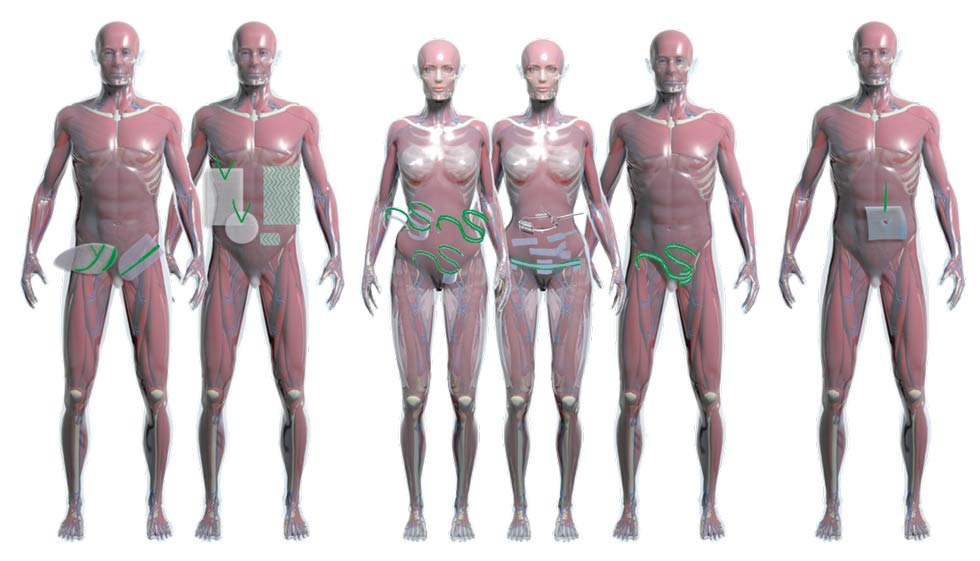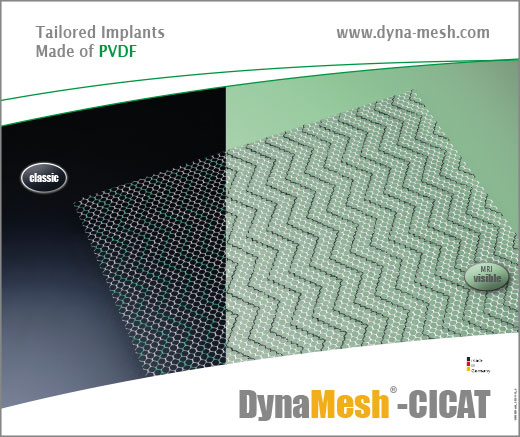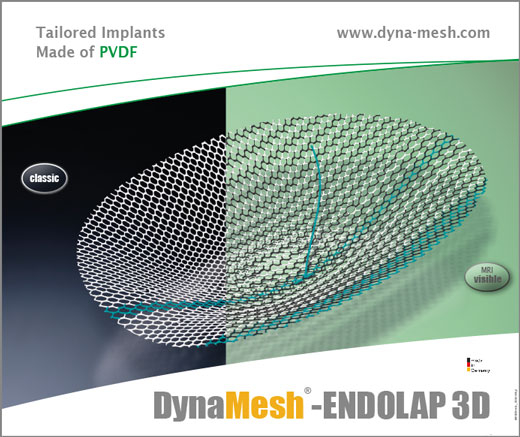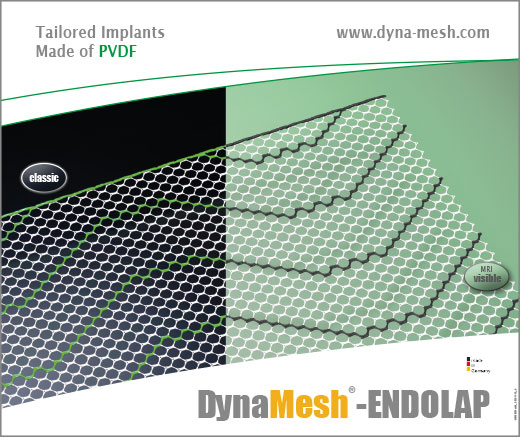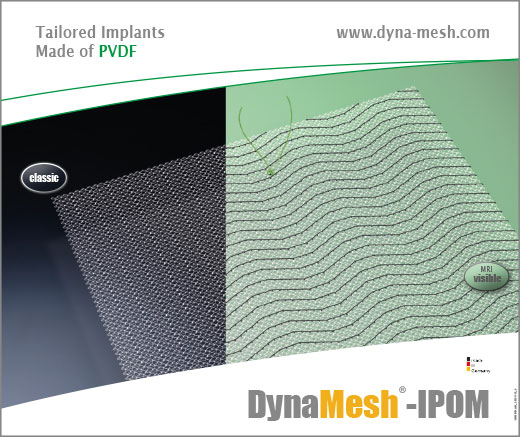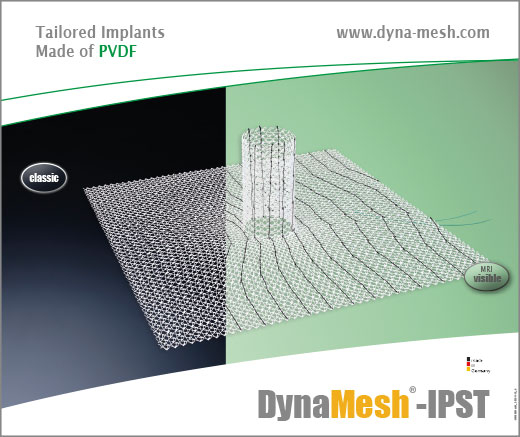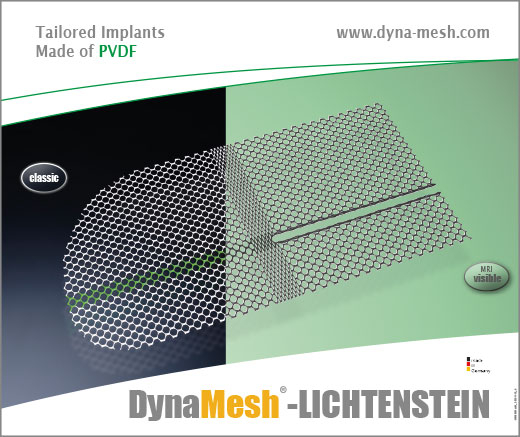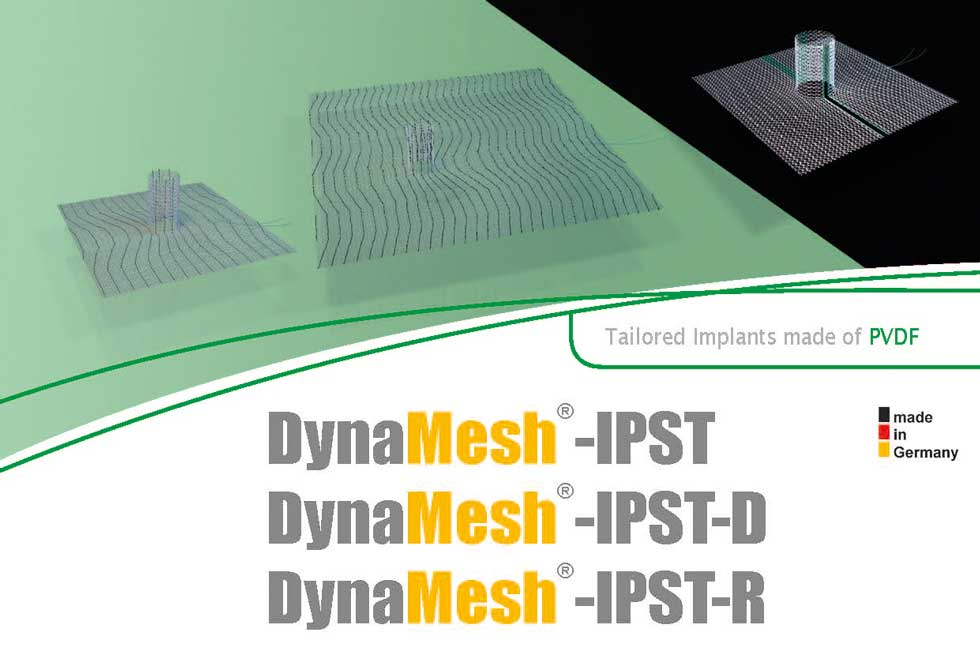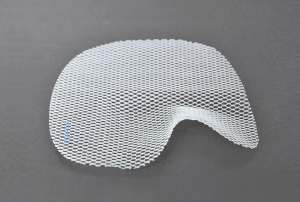DynaMesh
It all begins with a thread
In the beginning, there was not just any thread but a filament made of PVDF*: tear-resistant, biocompatible and smooth. PVDF “naturally” supplies many of the properties characteristic of an ideal implant. However, the thread first has to be warp-knitted into a textile structure. Not just anyhow but tailor-made for the relevant indication. The right stitch makes the difference.
Only through the right stitch can we achieve the “inner values” required, such as stability, elasticity and porosity. So the end result is not a “one fits all” implant but a specifically created DynaMesh® high-tech product.
Description
Product range
IPOM
DynaMesh®-IPOM implants are designed for soft tissue reinforcement and soft tissue bridging of the fascial and connective tissue structures of the abdominal wall as part of surgical treatment for epigastric hernias, umbilical or incisional hernias, and parastomal hernias following ostomy surgery.
CICAT
DynaMesh®-CICAT implants are designed for soft tissue reinforcement and soft tissue bridging of the fascial and connective tissue structures of the abdominal wall as part of surgical treatment for epigastric hernias, umbilical or incisional hernias, and also as part of incisional hernia prevention.
ENDOLAP
DynaMesh®-ENDOLAP implants serve to support the tissue and stabilise the fascial structures of the groin. They were specially developed for the endoscopic (laparoscopic) repair of inguinal hernias using common minimally invasive surgical techniques (TEP and TAPP).
ENDOLAP 3D
DynaMesh®-ENDOLAP 3D implants are used to reinforce connective tissue structures in the groin region. They were specially developed for the endoscopic (laparoscopic) repair of inguinal hernias using current minimally invasive surgical techniques (TEP and TAPP).
LICHTENSTEIN
DynaMesh®-LICHTENSTEIN implants serve to support the tissue and stabilise the fascial structures of the inguinal region. They were specially developed for the conventional repair of inguinal hernias according to Lichtenstein and come in a size which fits the majority of patients and can therefore be used immediately without needing to be cut to size.
IPST
DynaMesh®-IPST implants are used in the prophylaxis and therapy of hernias and fascial defects in the abdominal wall after ostomy as well as to reinforce connective tissue structures and prevent prolapse of the diverted portion of the intestines.
DynaMesh® visible
Description
DynaMesh products, excellent properties
Excellent properties
- Biocompatibility
PVDF mesh structures have good biocompatibility (assessed according to ISO 10993) and show significantly lower granuloma formation (scar tissue). Therefore, the risk of undesirable foreign body reactions is minimised.
- Ageing Resistance
PVDF has been used as a surgical suture material for many decades with great success, even in the most demanding areas of application such as ophthalmology and cardiology. A long-term study over seven years has proven this: The condition of the PVDF surface remains unchanged, filaments are still stable, nothing becomes brittle.
- Dynamometry
Textile implants must reinforce tissue. They have to cushion different forces – including the extreme stresses associated with coughing, sneezing and laughing. What is needed therefore, is a good interaction between stability and elasticity. Where necessary, DynaMesh® structures are characterised by high shape stability with defined elasticity. They retain their shape and high effective porosity under load.
- Atraumatic Selvedges
DynaMesh® products are not simply cut from a flat piece of mesh. Special warp-knitting machines produce smooth and therefore atraumatic selvedges (no ‘sawtooth’ edges!).
- Tear Propagation Resistance
The multiple meshing technique in warp-knitted* DynaMesh® structures minimises the risk of the zipper effect (once torn, the structure tears further).
The load-specific adapted tear resistance is one of the key properties of DynaMesh® implants.
DynaMesh® products are not woven or conventionally knitted, but warp-knitted*. This technology, unlike any other, makes it possible to make specific variations in the shape and structure of a textile implant, which means that we can construct features with different characteristics in different places within the structure. It is impossible to achieve a more accurate adaptation of implants to the relevant indication.
- Effective Porosity
During incorporation, the filaments are enclosed by an internal and external granuloma. When filament distance is too small, there is a risk that the whole intervening space will be filled with scar tissue (closed pores). Sufficiently large pores can prevent this.
How is this prevented? PP implants must have a pore diameter of at least 1 mm in all directions, even under load! In the case of PVDF implants, a diameter of 0.6 mm is already sufficient to keep the pores open due to the lower granuloma thickness. Only in this way can local autochthonous tissue form through a pore.

